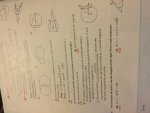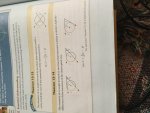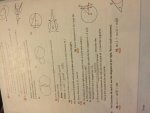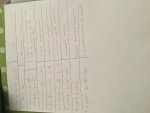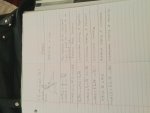NamiNuitsuki
New member
- Joined
- Oct 13, 2016
- Messages
- 10
Hi, I'd like to get some help with a question I have been stuck on for a few days. Here it is:

It is question number 36. Theorem 12-14 states the following:
"The measure of an angle formed by two lines that intersect outside a circle is half the difference of the measures of the intercepted arcs".
Any sort of help would be greatly appreciated. I do not know how to do proofs so an explanation would be welcome, as well. Or even the completed answer. I am desperate for anything at this point. Please help. Thank you with all my heart.
It is question number 36. Theorem 12-14 states the following:
"The measure of an angle formed by two lines that intersect outside a circle is half the difference of the measures of the intercepted arcs".
Any sort of help would be greatly appreciated. I do not know how to do proofs so an explanation would be welcome, as well. Or even the completed answer. I am desperate for anything at this point. Please help. Thank you with all my heart.

